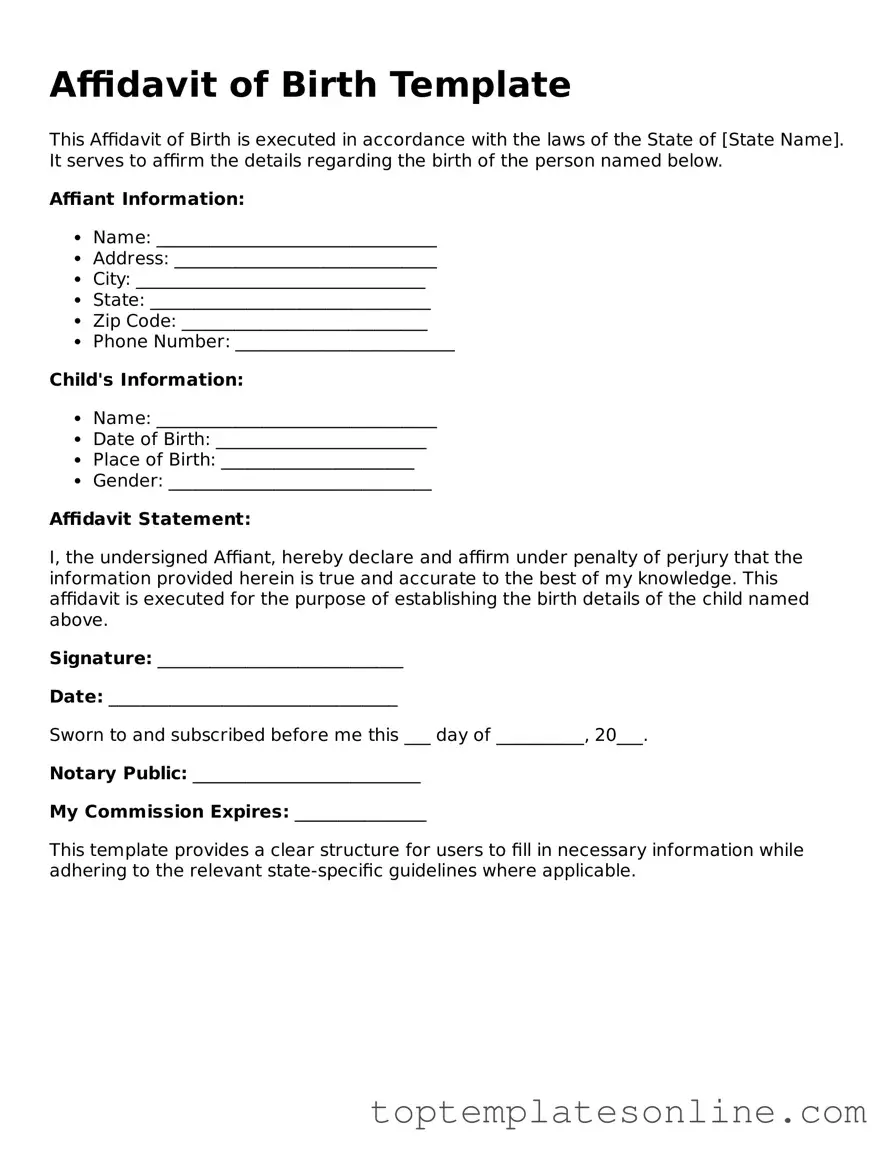The Affidavit of Birth form plays a crucial role in establishing a person's identity and legal status, particularly for those born outside of a hospital setting or for individuals whose birth records may be incomplete or unavailable. This document serves as a sworn statement, typically completed by a parent or guardian, affirming the details of the child's birth, including the date, place, and parentage. It is often required for various purposes, such as obtaining a birth certificate, enrolling in school, or applying for government benefits. The form must be signed in the presence of a notary public, ensuring its authenticity and legal standing. Additionally, specific requirements may vary by state, so it is essential to understand the local regulations governing the use of the Affidavit of Birth. By providing accurate and comprehensive information, this affidavit helps to safeguard the rights of the individual and facilitates access to essential services and documentation throughout their life.
